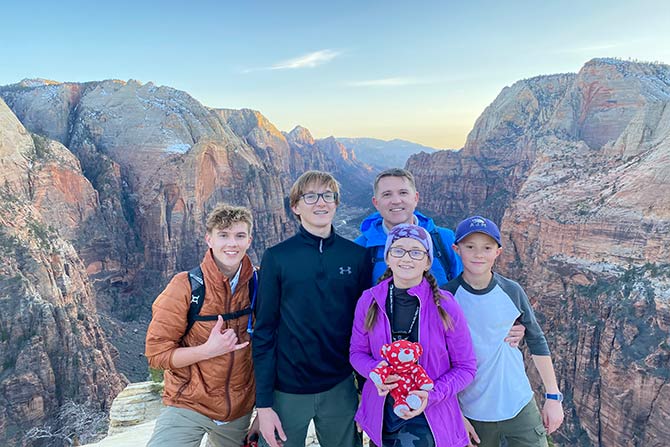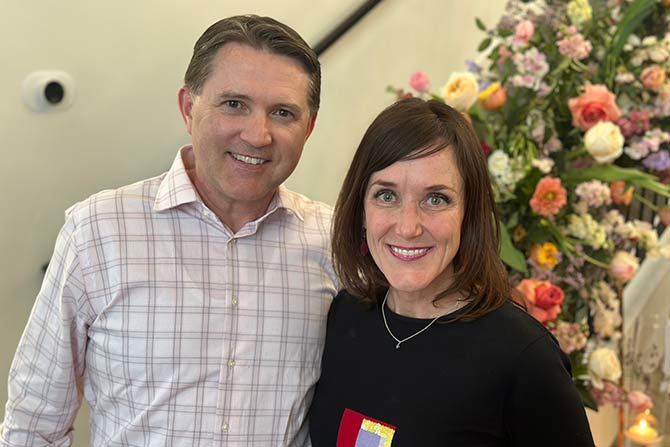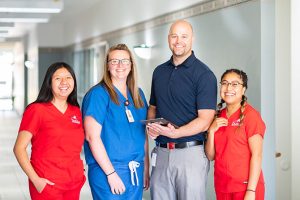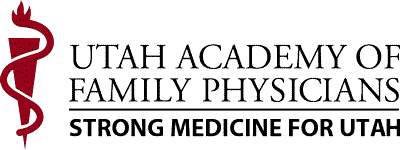A Bit About Dr. McIff
I grew up in Richfield, Sevier County, in the center of Utah. I went to college at Utah State University, and while there, I met and married my wife, Rachel. We have four children and now live in St. George. I have always loved the outdoors, and I continue in many activities, including mountain biking, skiing, camping, hiking, hunting and fishing, to name a few. My wife and I are actively involved in scouting with our children, where we do lots of these things. We are now also very busy watching our children’s sporting events and keeping up with them.
I attended Utah State University with the intention of going into engineering. After serving a mission in Mexico, my interests changed, and I decided to go into medicine. I have always been fascinated with science, but I decided I would rather work with people than things, so I changed my major to chemistry and applied to medical school. I attended medical school at the University of Utah and had a wonderful experience.
The Journey to Family Medicine
After I decided to go into medicine, I was immediately drawn to family medicine and never considered anything else. Growing up in a rural area may have impressed upon me the idea that the family physician was the quintessential “doctor,” helping patients in many different ways. I completed my residency training in Fort Wayne, Indiana. While there, I had many great experiences and did a lot of moonlighting in rural hospital emergency departments, so much so that I stayed an extra year and worked exclusively in emergency medicine. I then felt the desire to return to Utah, so I sought out a position in urgent care with Intermountain Healthcare in St. George. After five years of acute care medicine, I decided to return to a traditional primary care practice, moved to the Sunset Clinic and have happily been there since.


Life and Work in Southern Utah
Practicing medicine in St. George is very rewarding. I have felt a strong desire to develop strong relationships with my patients and earn their trust. This has helped facilitate their care by inspiring confidence in their treatment and motivating them to change their behavior. This investment in time has paid off by having some success and increased enjoyment in the workday.
I also have had the opportunity to teach medical students in the clinic, where these concepts and skills are discussed regularly, in addition to the routine clinical roles of diagnosis and disease management. We focus a lot on the “art” of medicine and high-level engagement with the patient.
Finally, I have had the opportunity to serve in several leadership roles both in the clinic and the medical community. One of these is serving on the Utah Cannabis Research Review Board, which meets regularly to review cannabis research and make recommendations on therapy. Another opportunity for leadership that has come up is to help open a new clinic in the Washington Fields area of St. George. The decision to move involved a lot of different factors. The clinic will be closer to my home, which is attractive, but it is also a chance to provide leadership, help organize and develop a new team and serve more patients.
Thoughts on the Future of Family Medicine
Family medicine has always been — and should always be — the center of medical care in our communities. However, with changing times and conditions, we will need to adapt in order to stay efficient and effective. Finding new ways to recruit students, train them effectively and make practicing medicine rewarding should continue to be our high priorities. They say that need drives innovation, and it is fair to say that our need is great, especially here in Utah. For practicing physicians, it is important to stay engaged, be a leader and continue to be a positive influence not only to our patients but to the community and future leaders. For medical schools and teachers in family medicine, it will be important to make training more efficient, less time-consuming and more affordable. Doing this while still maintaining high-quality standards will be the challenge. It will take the perspective of experienced physicians to help determine how the training could be altered to achieve those goals. I place a high priority on teaching students the importance of developing good judgment and decision-making capacity in addition to the knowledge base and technical skills. This is harder to achieve as it must be developed rather than taught or memorized. It also takes the most time. Together, we can continue to shape medical education and practice to keep family medicine the center of our healthcare system and our communities.









